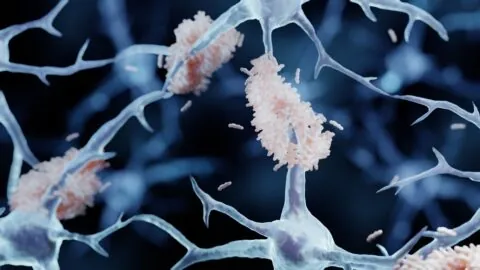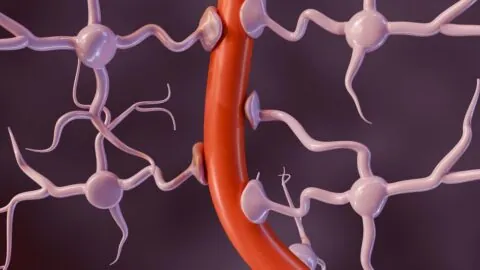October 24, 2025
A study from Rockefeller University suggests that an unholy duo of two proteins causes harm in much lower concentrations than either of them alone. This points to a possible route for intervention [1]. When amyloid met fibrinogen Amyloid beta (Aβ) and tau proteins are the usual suspects in Alzheimer’s disease. However, focusing on either of...
July 14, 2025
Researchers have discovered how α-synuclein (α-syn), a key protein in Parkinson's disease and Lewy body dementia, leads to inflammation and disruption of the axons in the brain. Failure of the barrier Unlike other organs, the brain is heavily protected from many compounds in the bloodstream in order to prevent damage, with a unique combination of...
July 11, 2024
Researchers have found that men and women have significant differences in how their brains' blood vessels change in Alzheimer's disease. The collapse of the blood-brain barrier Why We Age: Loss of ProteostasisThe loss of proteostasis is the failure of the protein-building machinery of the cell and the accumulation of misfolded proteins, which is one of...
October 30, 2023
Researchers publishing in GeroScience have discovered the molecular mechanisms through which fibrinogen, a protein that increases with aging, causes toxic compounds to more easily leak into the brain. The deteriorating blood-brain barrier In the brain, the microvessels (MVs) that are responsible for carrying blood to neurons and other cells provide careful filtration, both from infectious...
June 06, 2023
Korean scientists publishing in Nature were able to increase the stability of vitamin C, a powerful antioxidant, using a short, engineered DNA molecule called an aptamer. The result improved various aspects of brain aging in naturally aged mice [1]. The unstable antioxidant Oxidative stress is one of the most harmful age-related processes. In particular, it...
March 09, 2023
Research published today in Nature Aging has shown that heterochronic parabiosis, the circulatory joining of young and old organisms, has rejuvenative effects on the gene expression of multiple types of brain cells in mice. Parabiosis affects a wide variety of factors at once Heterochronic parabiosis is a well-known aging intervention in mouse studies, and some...






